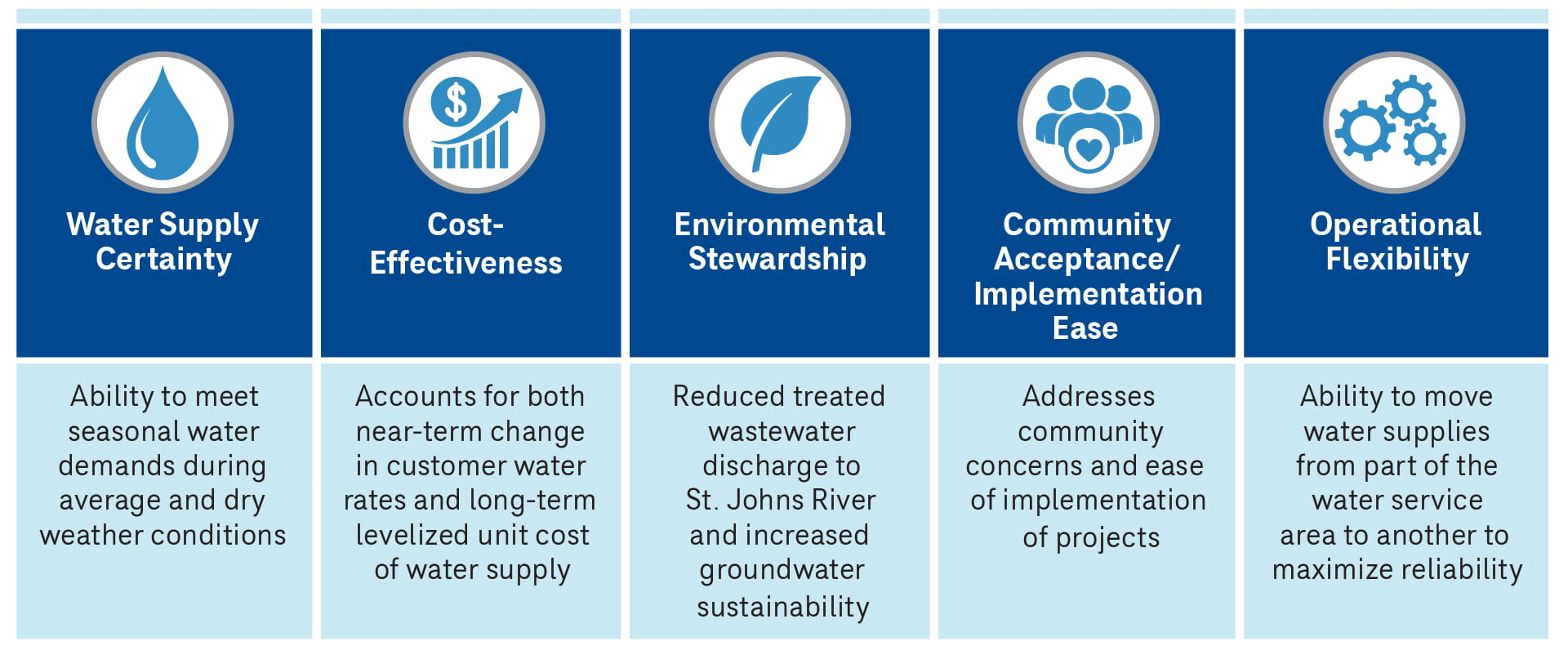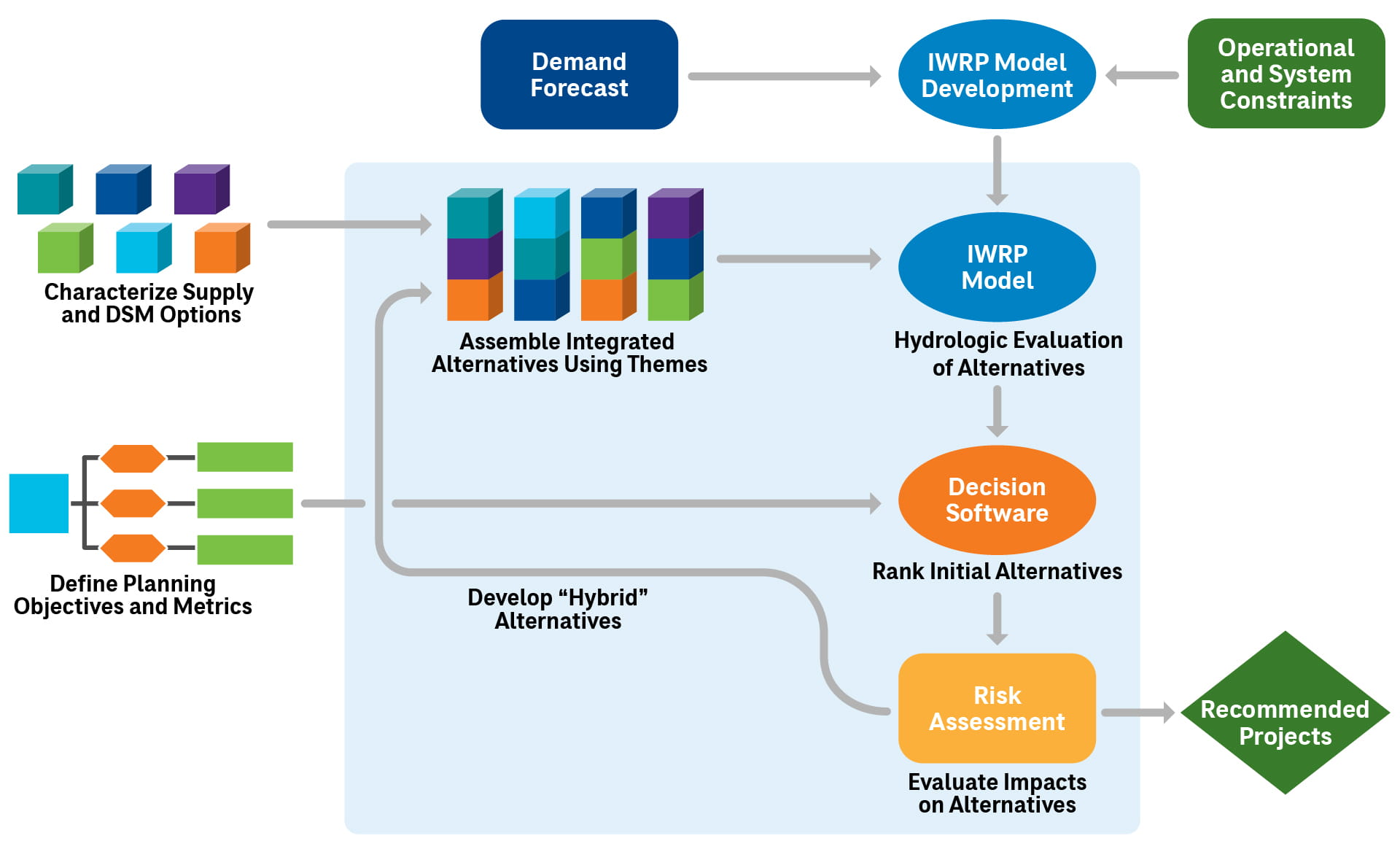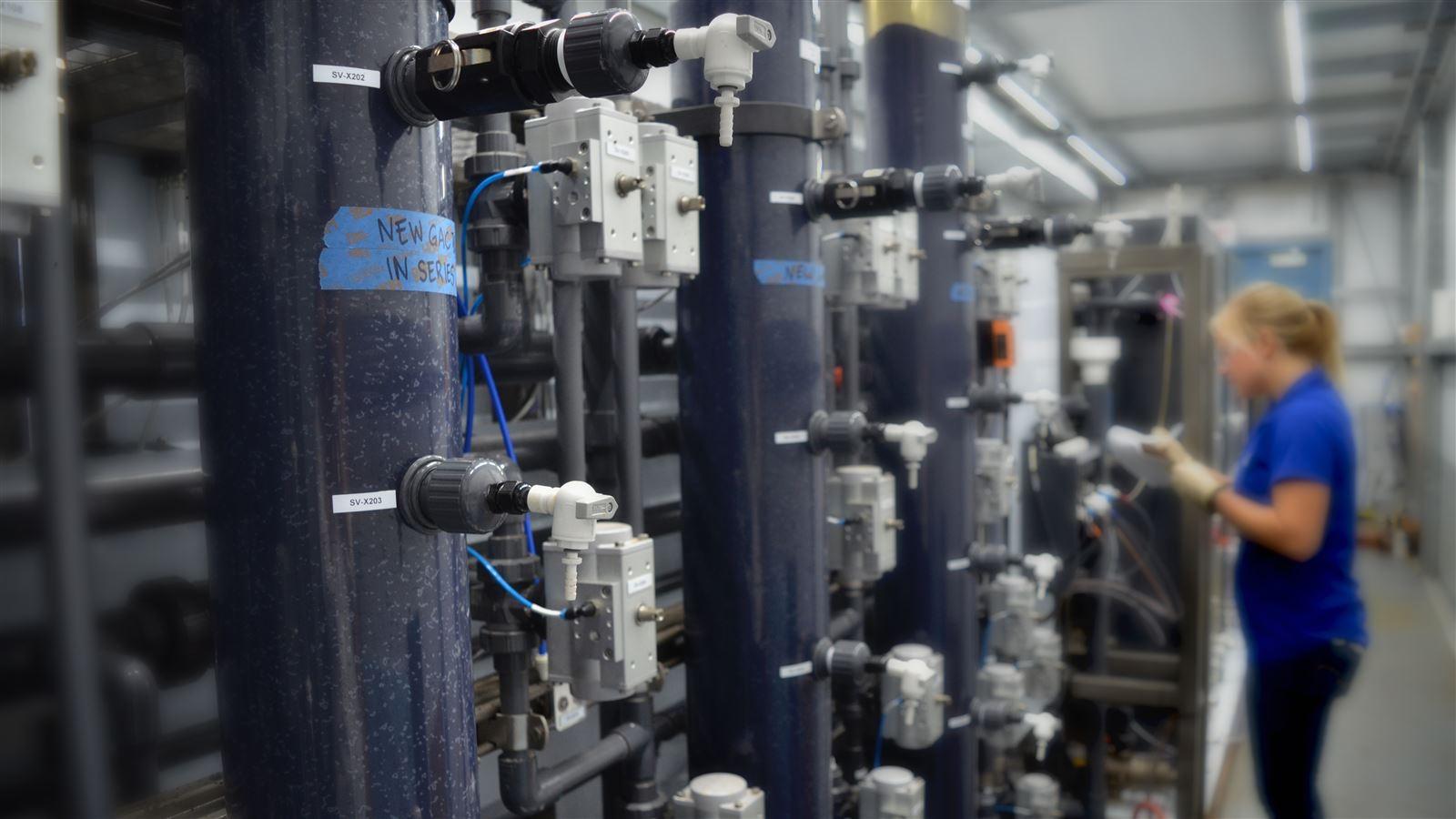Diversifying JEA’s Water Supply Portfolio Through Potable Reuse and Desalination
Based in sunny Jacksonville, Florida, JEA is one of the largest community-owned utilities in the United States. JEA provides water, wastewater, reclaimed water and energy services to residents and business in its 913 mi2 service area, including Duval and Nassau counties, as well as sections of St. Johns and Clay counties. JEA’s vast infrastructure includes 36 groundwater treatment plants, 11 water reclamation facilities, and an extensive conveyance and distribution system.
Future-proofing with an IWRP
Surrounded by beautiful beaches, streams, lakes, and water resources from the St. Johns River, the Jacksonville region is flourishing. The population in JEA’s service area is expected to grow by nearly 50 percent over the next 25 years. Dating as far back as the 1800s, the Floridan Aquifer—one of the most productive groundwater aquifers in the US—served as the single source of water supply for the JEA community. Given the growing population of the region and groundwater that is reaching sustainable limits JEA made the strategic decision to plan for the future with an IWRP and commit to significant investments into developing alternative water supplies.
A key driver for the IWRP’s development was JEA’s need to renew its consumptive use permit for groundwater with the St. Johns River Water Management District (SJRWMD). In 2031, SJRWMD will assess how JEA meets water needs while prioritizing environmental protection, conservation efforts, and expanding reclaimed water usage for non-potable purposes.
Evaluating water needs of the service area
JEA completed their IWRP in 2019, coupled with a Water Demand-Side Management Strategy for water increased water use efficiency. Total water demands were forecasted through 2070 and compared to existing supplies and operational constraints. The following objectives were used to guide the IWRP for JEA:

CDM Smith’s team of planners, engineers and scientists worked in collaboration with JEA’s water resources engineering staff to estimate future water needs, conceptualize alternatives, and rank projects based on criteria aligned with the IWRP objectives. In the end, a short- and mid-term capital improvement program was developed from the recommendations of the plan, along with a potential long-term strategy that can be revisited based on adaptive management at the utility grid level under different scenarios. At the heart of this IWRP was the use of a dynamic systems model developed by CDM Smith using the commercial software STELLA (Systems Thinking Experimental Learning Laboratory with Animation). The STELLA model brought the integrated water resource systems to life and allows for a more comprehensive analysis of the interactions between sub-systems and evaluation of alternatives. The model incorporates components such as future water demands, capacities of treatment and conveyance facilities, and permits for groundwater pumping at the grid level. CDM Smith also trained JEA modelers on use of the STELLA model for their continued use to support planning and implementation of their IWRP.
Below is an illustration of the IWRP planning process:

Recommendations for JEA's water supply future
The IWRP recommended three broad sets of actions categorized as short-term, mid-term, and long-term. The plan is designed to stay adaptable, constantly monitored, and ready for potential revisions as future conditions change. We are continuing to work with JEA to refine these recommendations, especially in light of new regulations on beneficial use of wastewater discharge.
Short-term recommendations (2020-2030)
- Design and construct an indirect potable reuse facility in the South Grid, drawing from Arlington East Water Reclamation Facility (WRF) to provide the region with an alternative water supply
- Expand reclaimed water conveyance infrastructure in the Nassau East area for additional non-potable water
- Permit, design, and construct a brackish groundwater desalination facility in the Nassau East Grid
- Permit, design, and construct an indirect potable reuse facility at Cedar Bay WRF for an alternative water supply in the North Grid
Mid-term recommendations (2030-2040)
- Expand operations at Cedar Bay WRF for additional indirect potable reuse
- Evaluate the potential for additional brackish groundwater desalination in the Nassau East Grid
- Permit, design, and construct the first phase of indirect potable reuse at Southwest WRF for the North Grid
- Permit, design, and construct the first phase of a brackish groundwater desalination facility for additional supply in the North Grid
Long-term recommendations (2040 and beyond)
- Grow indirect potable reuse at the Southwest WRF and potentially expand the use of brackish groundwater desalination to meet future needs in the Nassau East Grid and the North Grid
- Perform public outreach, permit, design, and construct a direct or indirect potable reuse facility at Buckman WRF
As the Jacksonville region continues to thrive, JEA's IWRP demonstrates its proactive approach and dedication to meeting water needs of both current and future generations. By prioritizing long-term decision making, economic operations, and environmental sustainability, JEA sets a high standard for community-owned utilities and paves the way for a resilient water future.

Meaningful projects that give back to communities and make the world a better place is what keep this work challenging and interesting.







